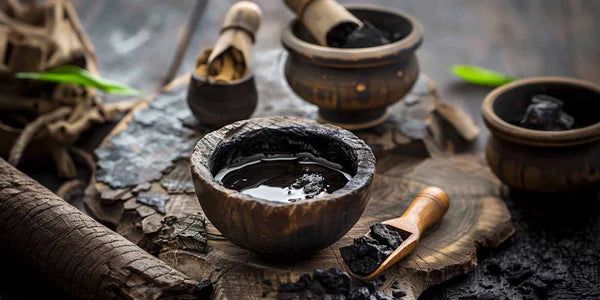Learn More
Discovering What Is Shilajit: Potential Benefits, Uses, and Precautions
If you’ve wondered, “what is shilajit?” you’re not alone. This ancient natural remedy, hailing from the Altai, Pamir and Himalayas, is known for its distinctive black resin enriched with fulvic acid and vital minerals. Our in-depth guide delves into shilajit’s benefits, traditional Ayurvedic roots, and modern scientific studies, offering you a comprehensive overview of this intriguing substance.
Key Takeaways
- Shilajit is a natural, organic substance from mountain ranges (Altai, Pamir, Himalayas and others), known for its fulvic acid content and over 84 essential minerals, which contribute to its health benefits.
- Ancient Ayurvedic texts cite Shilajit as a ‘rasayana’ with potential applications in healthy aging, cognitive health, bone density, and hormonal balance, though modern scientific research on its efficacy is still limited.
- When considering Shilajit supplementation, it’s vital to choose a pure, contaminant-free product, start with a low dose, be aware of potential side effects and drug interactions, and consult with a healthcare provider.
Unveiling Shilajit: A Natural Wonder from the Mountains

Shilajit, a sticky, black, tar-like natural substance, seeps from the rocky crevices of the mighty Altai, Pamir, Himalayas and others. Its origins trace back to the decomposed plant material, testament to its organic and natural composition.
The potency and purity of Shilajit resin are influenced by the altitude and location from which it is harvested, the purification methods employed, and the quality of the raw Shilajit. The most powerful Shilajit is sourced from the highest peaks of the Altai mountains, at elevations of around 14,000 to 15,000 feet above sea level, and this is precisely where our Shilajit resin is obtained.
The consistency of Shilajit transforms during the warm summer months. It becomes less sticky and flows more readily from between the layers of rocks. This transformation, orchestrated by the rhythms of nature, speaks volumes about the dynamic nature of this unique substance.

Shilajit’s therapeutic properties stem from its rich molecular composition. Shilajit contains a 15% to 20% concentration of fulvic acid, a natural byproduct of the breakdown of organic materials. The nutraceutical components of this fulvic acid make up 60 to 80% of its composition. It is a significant part of its overall chemical makeup. However, the substance has more to offer. Its organic content also includes:
- benzoic and hippuric acids
- fatty acids
- salicylic acid
- amino acids
- other essential organic substances
Alongside these organic substances, Shilajit is also a treasure trove of minerals, boasting more than 84 different elements essential for the body. The humic substances, mainly humic and fulvic acids, make up 60-80% of Shilajit’s composition, promoting nutrient absorption into tissues reproductive organs and aiding the detoxification process.
The Ayurvedic Perspective on Shilajit

Going back in time, Shilajit is extensively referenced in the annals of Ayurvedic medicine. Early Ayurvedic texts, such as the Charaka Samhita, celebrate Shilajit as a panacea and a substance that can enhance longevity. This is not surprising given Shilajit’s comprehensive health benefits and its ability to treat various chronic health conditions.
In Ayurveda, Shilajit holds a coveted position as a ‘rasayana’ or rejuvenator. This ties into the holistic goal in Ayurvedic medicine to prevent disease and enhance the quality of life. The belief is that a substance like Shilajit, rich in essential nutrients and minerals, can help achieve this goal.
